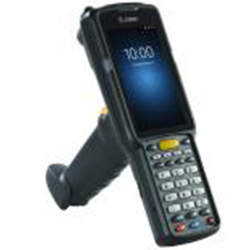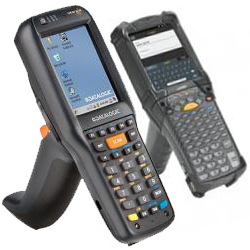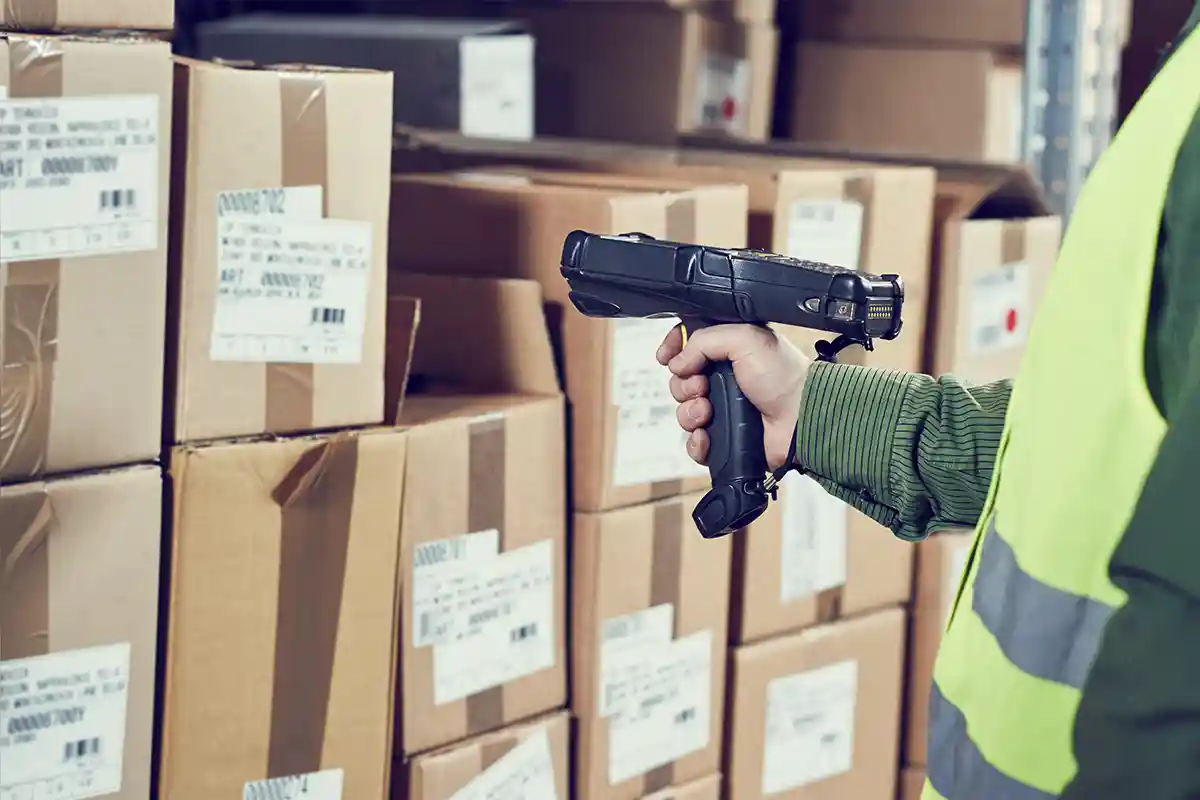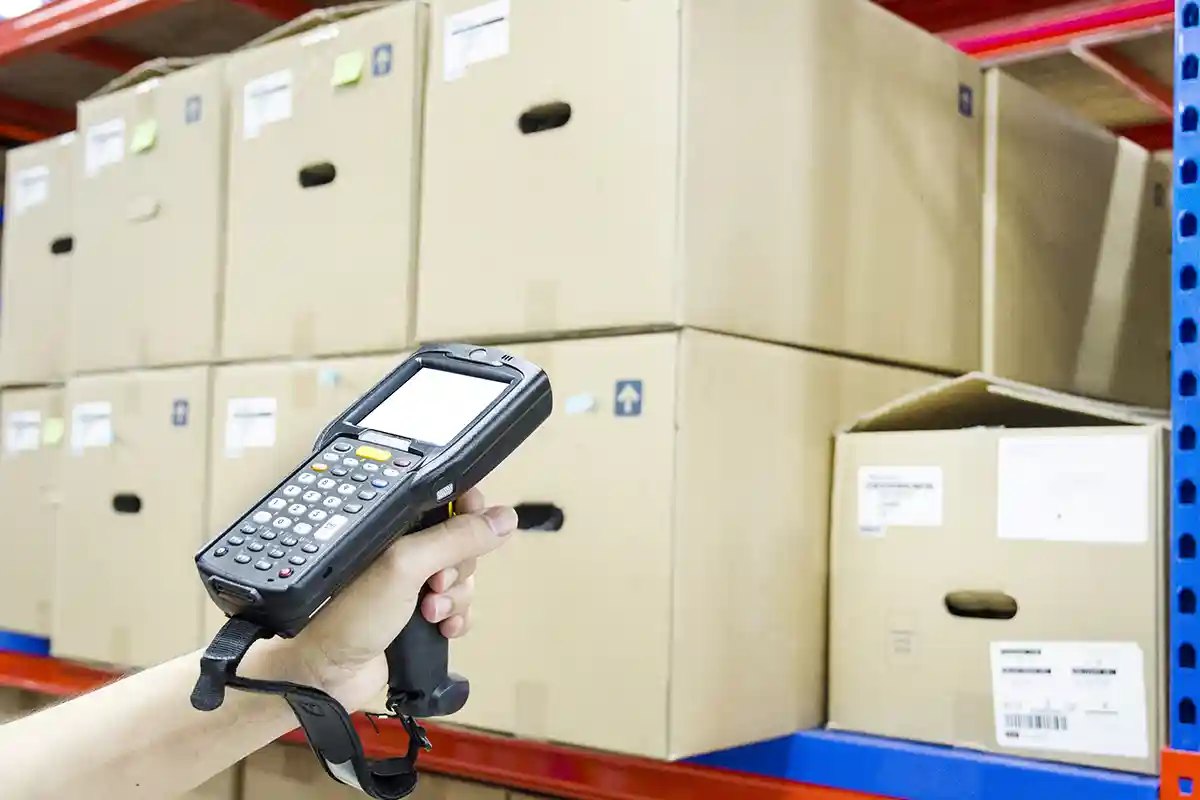Adequate Protection is Key
Barcode scanners are an important part of data acquisition. After having made a sufficient investment, it is often assumed that they will have a long service life. There is great surprise and annoyance in case the devices give up prematurely. Common reasons for that are improper use and insufficient protection of the barcode scanners. That is why it is important to think about adequate protection in advance.
by Marc Teuber
book1349 words timelapse7 minutes reading time
The effects of digitalization are becoming more and more noticeable in production, warehousing and logistics. In this context, stationary and, rapidly increasing, mobile data acquisition are becoming more and more important, especially in the context of Industry 4.0. This is because data is an indispensable prerequisite both for Industry 4.0 approaches and for digitalization in the broader sense.
Safe and Secure 🔗︎
Especially when using barcode scanners in the warehouse or in production, special protection requirements have to be met. This is due to the fact that in warehouses and production areas and their surroundings there are often harsh working conditions:
- Hard concrete floors
- High dust exposure
- Highly fluctuating temperatures
That is why it is important to think about adequate protection in advance. If necessary, the protection of equipment can often be improved later on. In addition, you should take adequate protective measures during use.
In the following, we are discussing three ways to increase barcode scanner protection.
1. IP Protection Classes 🔗︎
IP protection classes determine the extent to which devices are suitable for different working conditions and environments. The units are being tested for resistance to the ingress of foreign bodies, dust and water. There is a protection range from IP00 to IP69K. The first code number refers to resistance to foreign bodies such as dust and contact, the second code number to resistance to water penetration. In general: the higher the IP rating, the higher the protection. For example, IP68 means the device meets the highest requirements for dust-tightness and is fully protected against contact and permanent submersion. For normal use in the industrial sector, however, there are available devices with protection ratings from around IP44.
IP Protection Type vs. IP Protection Class vs. IK Impact Resistance Level 🔗︎
In this context, you should keep in mind that IP protection type and IP protection class have a different meaning, even though these expressions are often used like synonyms. Strictly speaking, IP protection classes indicate the extent to which the user is protected from electric shocks when using electrical equipment. There is a range of protection classes from IP0 to IP3. IP0 provides only basic protection, whereas IP3 offers the highest level of protection, which, in addition to basic protection, includes further protective measures such as stronger or double insulation. In addition, there is also the IK impact resistance grade (IK 00 to IK 10), indicating how resistant an enclosure is to mechanical stress. Resistance to impacts and shocks plays a prominent role here.
Barcode Scanner: For normal and rough Applications 🔗︎
The protection level of industrial barcode scanners today starts at around IP44. This means that devices are extensively protected against water penetration. In addition, they can usually withstand falls from a height of between one and two metres onto concrete floors. More robust barcode scanners often meet the IP65 or IP68 protection regulations and are thus dust-tight as well as protected against stronger jets of water, temporary or even prolonged submersion. Even falls from heights of slightly more than two metres usually do not cause any damage. In addition, the devices can usually withstand several thousand rollovers from a height of up to one metre.
Examples of Barcode Scanners in Practical Use 🔗︎
To illustrate protection in practical use, we are presenting below some barcode scanner models used by DATACAP customers.

Zebra MC3300
Zebra MC3300 meets the IP54 protection class and is protected against damage up to a drop height of 1.5 metres. In addition, the scanner has a special break- and scratch-resistant display (Corning Gorilla Glass).

Datalogic Memor 1
Another example is the Datalogic Memor 1 barcode scanner, which complies with IP44 and allows contactless charging. Even though the charging process takes longer, there is no wear and tear on the charging contacts and there are no more tangled cables.

Datalogic Skorpio X4 and Zebra MC9200
Datalogic Skorpio X4 barcode scanners as well as Zebra MC9200 barcode scanners are suitable for more demanding work and meet IP64 regulations. In addition, there is also guaranteed protection against falls onto hard floors from a height of up to 1.8 metres.

Zebra WT41N0
Zebra WT41N0 is a ring scanner that can be attached to the wrist. Both hands remain free during work, which increases productivity. Even though ring scanners are comparatively less robust, there is also less risk of damage from falling because they are attached to the wrist. Nevertheless, Zebra WT41N0 has a relatively high IP54 protection and can withstand harder falls from 1.2 metres.
2. Special Protective Covers 🔗︎
Protective Covers: Additional Protection, even with higher IP Protection Classes 🔗︎
If barcode scanners do not have adequate protection, special protective covers can often help. Under certain circumstances, the existing IP protection class can be increased or extended. In general, however, you should be careful with protective covers: They do not form a unit with the device casing and are not firmly connected to it. Protection is generally weaker than with protection built directly into the enclosure. However, there are also major differences in protective covers. According to information from some manufacturers or suppliers, high-quality protective covers can in some cases meet the requirements of protection class IP65, IP67 or even IP68. It is up to you to decide to what extent you can rely on these specifications.
Protective Covers & Barcode Scanners: Further Application Scenarios 🔗︎
It should also be noted that barcode scanners may not always have the original level of protection after a repair or other interventions that require the enclosure to be opened. In such cases, protective covers are also suitable as an alternative and can (partially) restore the lost protective effect. In other cases, a protective cover offers additional robustness beyond that of the IP protection classes. This may provide better shielding against the cold thus protecting the batteries. Furthermore, you can prevent or minimize condensation. Protective covers and other protective devices may therefore also be useful for professional barcode scanners with higher IP protection classes. However, it is important to make sure that the openings in the cover match those on the barcode scanner housing. There is also a risk that devices will not be inserted properly into the cases and that protection will be lost or only be effective to a limited extent.
In some cases, a potential disadvantage can also become an advantage: Protective covers can be removed again. In the event of technical interventions that affect the resistance of the enclosure, there is no or less impact on the original level of protection. Moreover, replacing a protective cover is more cost-effective than replacing a barcode scanner casing. There are even more advantages: Covers protect plastic enclosures from UV radiation, they do not become brittle and cracked as a result.
In addition to professional barcode scanners, today more and more smartphones are also being used as barcode scanners. They can show their strengths in less demanding tasks. Here, however, protective covers are absolutely necessary so that the smartphone can be used in the long term.
3. Other Aspects 🔗︎
Laser Beams: Avoid Health Damages 🔗︎
Under certain circumstances, laser beams from barcode scanners can be harmful for your eyes. Proper use of the devices and any formal guidelines created for this purpose thus also indirectly contribute to their longevity. This prevents barcode scanners from being restricted in use or prevents the user from having to invest in other technology prematurely. Therefore, it is advisable to observe some rules so that work performance does not suffer and additional costs can be avoided. If the laser beam does come into contact with the eyes, you should close them immediately and avert your head. In addition, you should take care that the laser beam is not being directed at other people.
Mobile Device Management Solutions prevent Loss and Theft 🔗︎
Especially when working in large production and warehouse areas with changing employees, mobile barcode scanners can be misplaced or lost in some other way. In these cases, mobile device management (MDM) can help protect devices from loss. It is a software that can be used to manage the functions of all mobile barcode scanners being in use and to determine their location.
Selection Criteria to be considered
On the one hand, customers expect faster deliveries. On the other hand, the diversity of variants and miniaturization pose great challenges for logistics and warehouse management. Mobile data capture plays an important role in this context. Against this background, we are discussing which criteria are to be considered when choosing a barcode scanner.
Smartphones vs. professional Mobile Device Scanners
In addition to professional MDE solutions, smartphones are increasingly being used as barcode scanners today. For less demanding tasks, they can play to their strengths. However, as requirements increase, their advantages increasingly fade - until they have to pass the baton to professional MDE devices. In the end, it’s careful consideration what counts.

